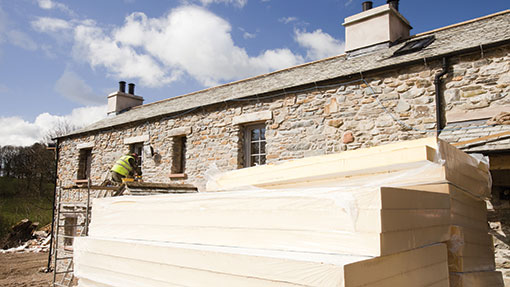New planning rules make it easier to build houses on farms

Barry Davies and Tony Kernon answer key questions on new planning rules that should make small rural housing developments easier.
Farm buildings may be converted into up to three residential dwellings under new Permitted Development Rights (PDRs). Since 6 April, these allow residential conversion without going through the full planning process.
Do the changes apply to any agricultural buildings?
The changes apply to existing agricultural buildings that have been used solely as part of an established agricultural unit either as at 20 March 2013 or, if after that date, for 10 years prior to the date that the development begins.
See also: Farm buildings: Know your Permitted Development Rights
The rights do not apply to stables or to buildings in non-agricultural use, for example as a result of diversification. Nor do they cover buildings in National Parks, Areas of Outstanding Natural Beauty or designated conservation areas such as Sites of Special Scientific Interest.
Is there a limit on the size of the dwelling(s)?
Yes. Up to three dwellings can be developed, but the total floor space under the change of use cannot exceed 450sq m (4,844sq ft). Hence you can develop one large house or two or three smaller dwellings.
This applies across the whole agricultural holding, so it can apply to three different buildings and these can be on different sites on the farm.
What is the process?
Rather than going through full planning, a process known as prior notification is used to apply for a change from agricultural to residential use.
The new PDRs permit the change of use and the building operations reasonably necessary to convert the building.
To use the prior notification system, applicants must complete a form called “Prior approval of proposed change of use of agricultural building to a dwelling house” and pay a fee of £172 to the planning department of the local authority.
Basic details describing the proposal, a plan of the building and a sketch explaining what alterations are proposed should be included.
You do not need to provide architect’s drawings or structural surveys at this stage although some people chose to do so. The local council then has eight weeks to either issue a change of use acceptance or to refuse it.
In theory, if you have not heard back from the council by the eight-week deadline, it can be assumed that prior approval has been given, but it is prudent to contact the authority and ask for an acceptance certificate to be issued.
The local council is in theory limited in the issues it has to consider. These are:
- Effects on transport and highways
- Noise implications
- Contamination risks of the site
- Flooding risks on the site
- Whether the location is impractical or otherwise undesirable
- Whether they require to approve the design and external appearance of the building.
During the initial eight-week period, the usual planning consultation process will be held with statutory consultees such as the Highways Agency and the local parish council and those occupying neighbouring properties will be notified of the application.
Once the development has agreement in principle through prior notification, the authority will then need full architectural plans for the building operations reasonably necessary to convert the building.
These will be appraised by the local authority for design, external appearance of the building and so on. In all cases the development after grant of PDR must commence within three years of that date.
What changes can I make to convert the building to residential use?
The regulations allow for physical changes necessary to convert the building to a residential dwelling. These are qualified as the installation or replacement of windows, doors, roofs or exterior walls, or water, drainage, electricity, gas or other services.
Conversion plans accepted under these PDRs will include any partial demolition needed to carry out the above works.
The extent of demolition depends on individual circumstances – the order allows the installation as well as replacement of exterior walls, so it should be possible to build new external walls under the rights.
However, the external dimensions of the converted building must be no larger than the external dimensions of the existing building at any given point.
There are some appeals pending on this point, the results of which should give some guidance.
Frustratingly, the partial demolition and restriction on not exceeding the existing exterior dimensions mean that some redundant agricultural buildings, such as former piggeries or chicken sheds, may not be viable for a change of use to residential.
How large an area of associated land and garden can there be beside or around the residential dwelling?
This area is known in planning terms as curtilage. The PDRs state that the land area beside or around the residential dwelling should be no larger than the land area occupied by the agricultural building, so if the building to be converted is 450sq m, then that is the maximum area the curtilage also can be.
What about my Permitted Development Rights on the farm?
Farming has other, much older, Permitted Development Rights including that to erect an agricultural building of up to 465sq m (5,000sq ft) in any two years.
However, if these new residential rights are used, those for erecting agricultural buildings will be withdrawn from the holding for 10 years.
This makes it important to consider the medium-term implications of any residential development under the new rights for the whole farm business.
I rent my farm on a statutory Agricultural Holdings Act tenancy, do I still qualify for these new regulations?
The new PDRs cannot be used where the agricultural holding is occupied under an existing statutory agricultural tenancy or a Farm Business Tenancy, unless there is express consent from both landlord and tenant.
Barry Davies and Tony Kernon are surveyors and members of the rural planning sector of the British Institute of Agricultural Consultants
